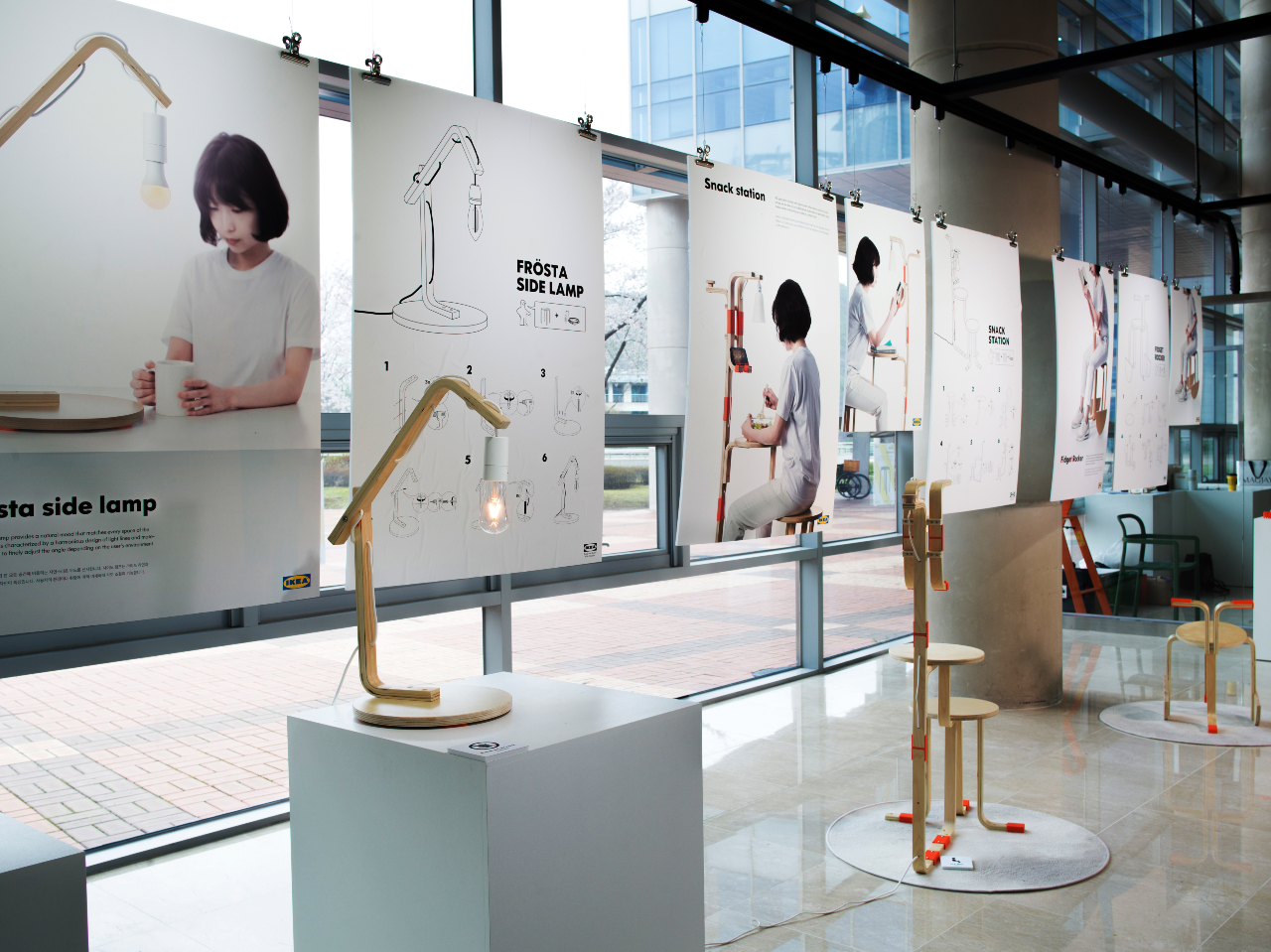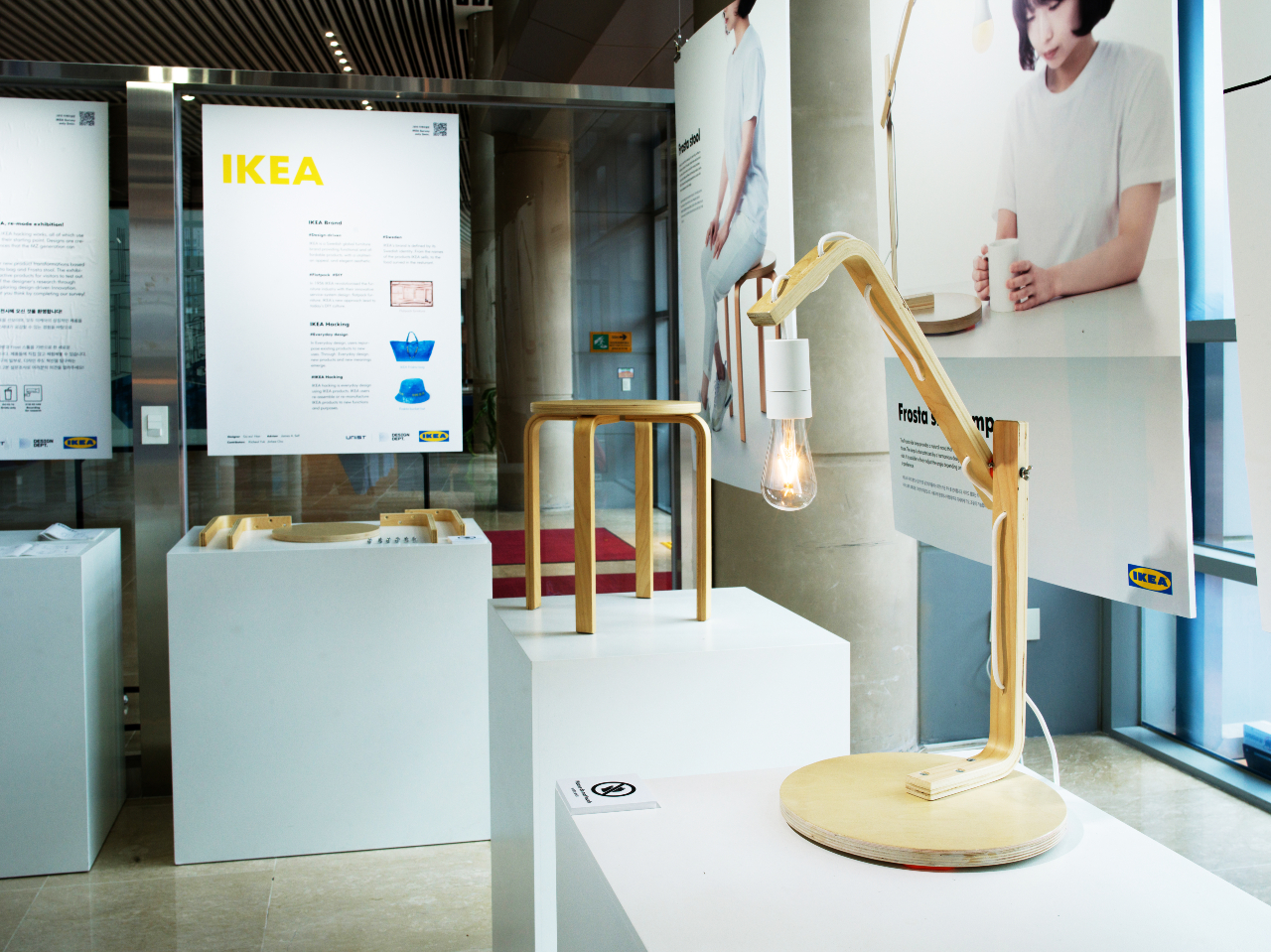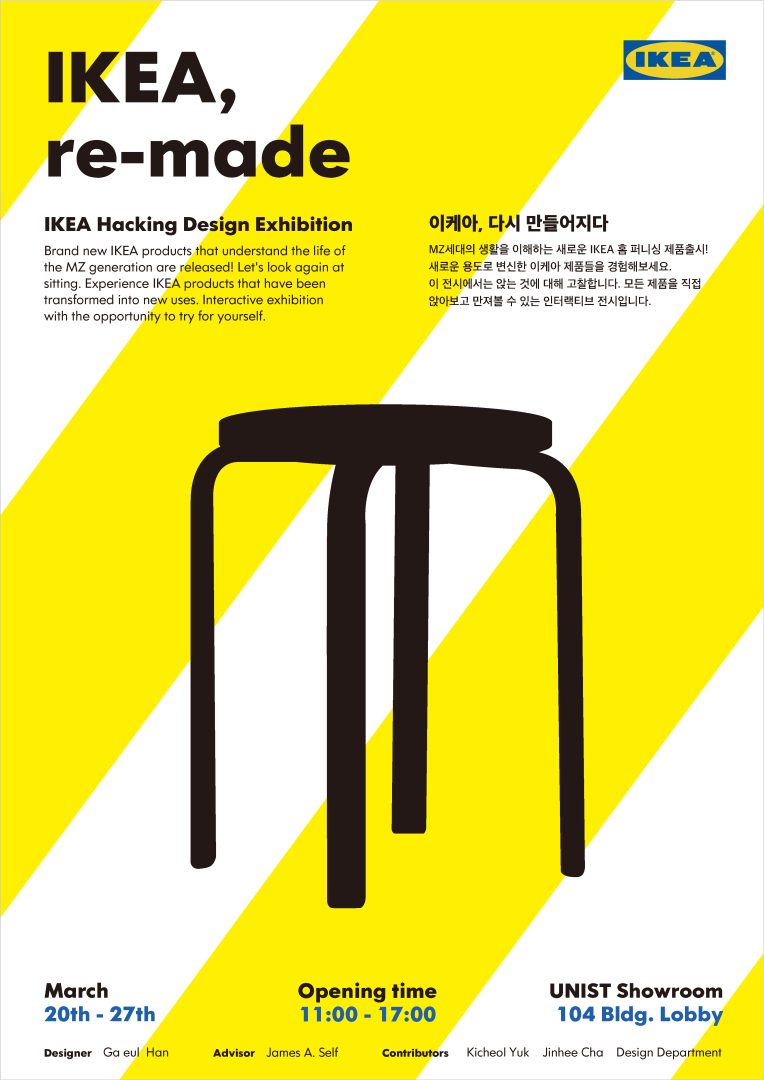A unique exhibition, showcasing the research-through-design approach kicked off this week.
This event, namely ‘IKEA Hacking Design Exhibition‘ that explores IKEA product hacking has been led by a PhD researcher Gaeul Han from the Department of Design at UNIST. The team, consists of Professor James A. Self, Gaeul Han, Jinhee Cha, and Kicheol Yuk, will be showcasing works of art they had created by repurposing pieces of IKEA in an exhibition running from March 20-27th, 2023.

IKEA Hacking Design Exhibition, namely ‘IKEA, remade’ will held at the UNIST Design Showroom from March 20 to 27, 2023. l Image Credit: Kyoungchae Kim
Held under the theme of ‘IKEA, re-made,‘ the exhibition aims to explore IKEA hacking through the lens of semantic meaning applied to designed products. In particular, they plan to showcase series of IKEA designs, developed and prototyped within the Design Department. Their aim is to gather audience responses to the design concepts and functional prototypes on display. However, the exhibited works also introduce to the wider UNIST community some of the ongoing design research activities from the Department of Design.

‘Frakta Beanbag,’ a beanbag made out of the Frakta shopping bag from IKEA. l Image Credit: Department of Design, UNIST
Among many outstanding artworks, one attention-grabbing piece was ‘Frakta Beanbag,‘ a beanbag made out of a Frakta shopping bag from IKEA. Frakta Beanbags are more durable, lightweight, and even versatile than any other beanbags. They are also easy to keep clean – just wipe it with a damp towel and dry. Besides, the handles on both sides improve practicability. “Too expensive to buy a sofa and your space is tight? Organize your own resting space with a Frakta Beanbag,” noted the design team.

‘Frösta Side Lamp,’ a side lamp that has been created out of the $15 IKEA Frösta Stool. l Image Credit: Kyoungchae Kim
Another artwork that has captured our attention was ‘Frösta Side Lamp,‘ a side lamp that has been created out of the $15 IKEA Frösta Stool. This lamp aims to provide a natural mood that matches every space of the house. It is characterized by a harmonious design of light lines and materials. Thus, it is possible to finely adjust the angle depending on the user’s environment.
Meanwhile, the exhibition provides a reference case for the types of design driven research projects undertaken by the Department of Design at UNIST. The design works displayed exemplify how design can embed within a research project as opportunity to control stimuli and drive participant engagement.

IKEA Hacking Design Exhibition, namely ‘IKEA, remade’ will held at the UNIST Design Showroom from March 20 to 27, 2023. l Image Credit: Department of Design, UNIST


![[IKEA, re-made] An Exhibition for Design-driven Research Kicks Off at UNIST](https://news.unist.ac.kr/wp-content/uploads/2023/03/IKEA_REMADE_MAIN-1920x960-800x400.jpg)














